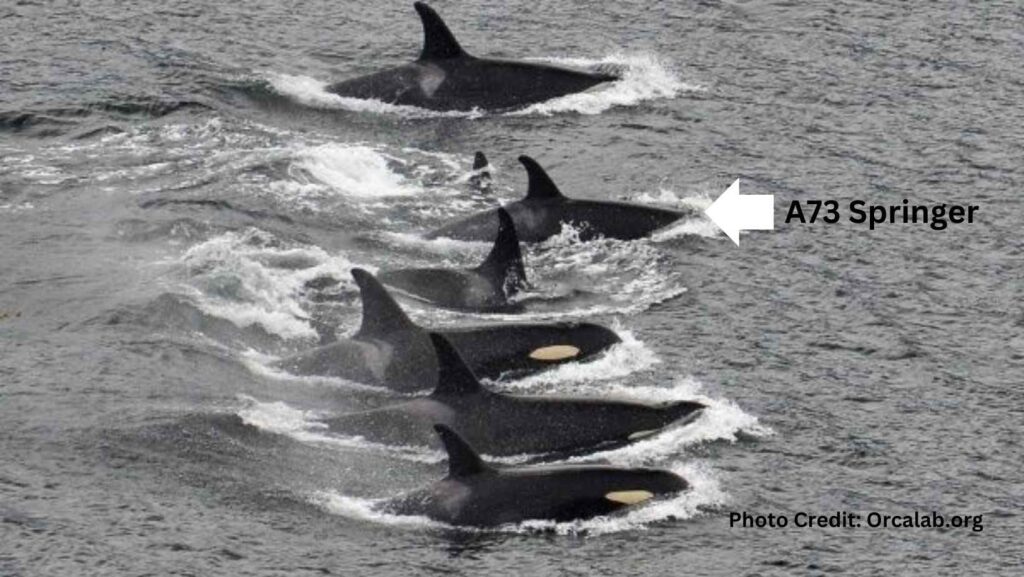The Northern Resident Killer Whales of British Columbia: Population, Pods & the Story of Springer (A73)
As of 2025, the Northern Resident killer whale (Orcinus orca) population, which inhabits the coastal waters of British Columbia, continues to thrive. These whales are a distinct and well-studied population of fish-eating orcas that frequent areas such as Johnstone Strait, the Broughton Archipelago, and the central to northern coastlines of B.C.
Population Overview (2025)
The Northern Resident orcas have shown a slow but steady increase in numbers. While the population was estimated at 332 individuals in 2021, conservation efforts and protected habitat have supported continued growth. The population is divided into three acoustic clans:
- A Clan – approx. 175 whales
- G Clan – approx. 98 whales
- R Clan – approx. 59 whales
These clans are made up of pods, which in turn consist of matrilines—family groups led by elder females. These matrilines are stable and lifelong, with offspring staying with their mother for life, forming some of the most complex family units in the animal kingdom.
Understanding Orca Society: Clans, Pods & Matrilines
- Matriline: A group consisting of a matriarch and her descendants.
- Pod: One or more related matrilines that travel and socialize together.
- Clan: A collection of pods that share similar vocalizations or dialects.
The Northern Residents are known for their tight-knit social bonds, collaborative hunting strategies, and unique calls passed down through generations.
Famous Pods of the Northern Resident Community
Some pods have gained widespread recognition among researchers and whale watchers alike:
- A1 Pod – Often seen in the Johnstone Strait, home to three active matrilines.
- A4 Pod – Known for its resilience and deep connection to the iconic orca, Springer.
- A5 Pod – Historically significant, as it includes Corky, one of the first orcas captured for captivity.
⭐ The Story of Springer (A73): A Remarkable Orca Reunion ⭐
One of the most heartwarming and historically significant orca stories is that of Springer (A73).
Born in 2000 to the A24 matriline of the A4 Pod, Springer was discovered alone and malnourished near Seattle in 2002, hundreds of kilometers away from her family. Her vocal dialect and genetic testing identified her as a Northern Resident killer whale.
What followed was an unprecedented, international rescue and reunion effort. Springer was successfully rehabilitated and transported back to the waters off northern Vancouver Island—where, incredibly, she rejoined her pod.
Today, over 20 years later, Springer is thriving in the wild, with offspring of her own. Her story remains a global symbol of conservation success, cross-border collaboration, and the power of family bonds in the orca world.
Protecting the Future of Northern Residents
The Northern Resident killer whales are a cornerstone of B.C.’s marine ecosystem and cultural identity. Through respectful whale watching, responsible boating practices, and ongoing scientific research, we can help ensure these intelligent, social, and majestic animals continue to thrive for generations to come.
Picture: Springer and Her Offspring (2021):
-
Description: A recent photo depicting Springer with her two offspring, illustrating her thriving life in the wild.
-
Source: OrcaLab
